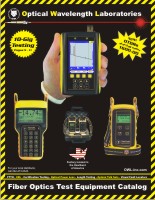| Video #: C1007 | Duration: 14:35 | File Size: 246.9 MB | File Type: MP4 |
| Description: Explains the concept of OTDR dead zones, the effect of dead zones on OTDR measurements, and the use of OTDR launch cables to counter the effects of dead zones. | |||
|
Pause the video after each objective to answer the review questions below. |
|||
|
SECTION 1: OTDR DEAD ZONES DEFINED A1: True
A2: Pulse width and OTDR-related dead zones
A3: Yes; longer traces may require wider pulses
A4: Event and attenuation dead zones
A5: Attenuation
SECTION 2: OTDR LAUNCH CABLES A1: Fiber rings, dead zone boxes, pulse suppressors
A2: At least 50 meters
A3: Allow OTDR photodiode recovery; measurement of near-end connection
SECTION 3: DURABILITY AND COST ISSUES A1: False
A2: Cost
A3: Extreme length, compounded by necessity of multiple connector combinations
SECTION 4: ECONOMY VS. UTILITY A1: Reduce cost by purchasing only one launch cable
A2: Additional reflection caused by mating sleeve prohibits measurement of near-end connection
SECTION 5: OTDR LAUNCH CABLE CONFIGURATIONS A1: Fiber ring
A2: Long fiber spool with mating sleeves on both ends
|
|||


